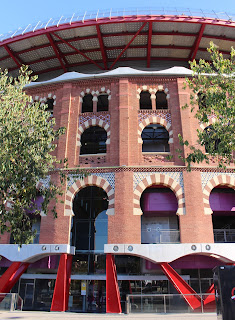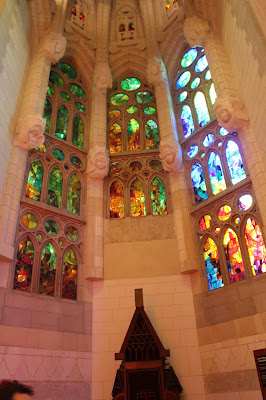 |
| exterior of Picasso Museum |
First Communion, his first work to be shown in a formal exhibition, was featured in the second gallery. It reflects the demands of his academic studies -- a realism style, like everyone else's at the time. Much of his other work from the period -- things like sketches of places around Barcelona -- show that he was already starting to break away from the norms, developing his own style.
He had tried to study in Madrid, but broke away from the formal schooling to hang out in the Prado Museum and admire the work of El Greco and Diego Velasquez. He wrote that those two artists inspired him. The museum has one original El Greco that formed the basis for a number of Picasso's sketches and paintings. But probably the best, was his homage to the famous Velasquez painting Las Meninas (Maids of Honor), seen here thanks to an internet search:
Three years before his death, Picasso donated 57 paintings in his Las Meninas series to this museum. In a couple of galleries you can see everything from a black and white recreation to totally cubist renditions. It was very interesting. Photos here, too, are off the internet.
On the way home I got some photos of the Palau de Musica. We had dinner across the street at Tosca a couple of nights ago, but I didn't have my camera. This is one of the city's concert venues, and the night we went to dinner it was hosting a Flamenco Gala.
We also saw some interesting artwork outside a contemporary art museum near the cathedral.
 |
| Piel de Metal (Metal Skin), Julio Nietes |


















































